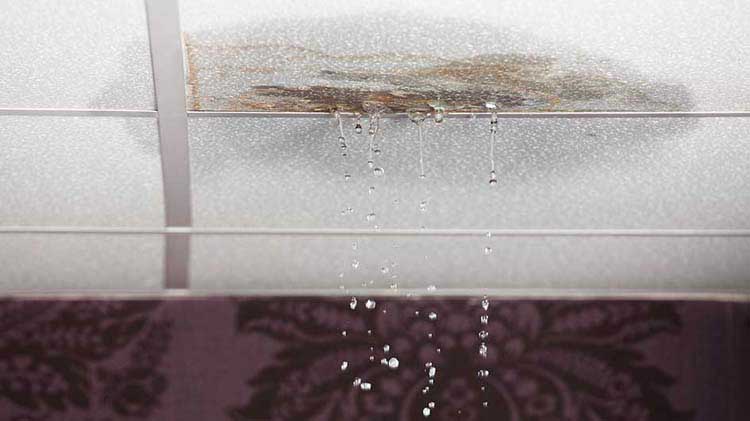The article listed below on the subject of How to detect water leaks in your home is incredibly enjoyable. Check it out yourself and figure out what you think of it.

Leaks not just trigger waste of water however can likewise cause unnecessary damage to your residence as well as promote undesirable organic growth. Water leakages might go undetected because most of the pipework in our home is hidden. By looking and understanding for everyday scenarios that cause leaks, you can secure your home from future leakages and unneeded damages. Today, we will certainly consider 6 leakage creates that might be causing your pipelines to trickle.
Instant temperature adjustments.
Severe temperature changes in our pipelines can trigger them to increase and contract unexpectedly. This expansion as well as contraction might trigger cracks in the pipelines, particularly if the temperature are below cold.
Corroded water systems
This might be the reason of staining or bending on your water pipelines. If our plumbing system is old, take into consideration replacing the pipelines since they are at a higher risk of rust than the newer models.
Faulty Pipeline Joints
Pipe joints can deteriorate over time, resulting in water leaks. If you have loud pipelines that make ticking or banging sounds, specifically when the hot water is transformed on, your pipeline joints are most likely under a lot of stress.
Encroaching roots
Most water leaks begin outside the residence rather than inside it. You might observe damp spots or sinkholes in your backyard, and that might imply that tree roots are getting into water lines triggering water to leak out.
Poor Water Connectors
Sometimes, a leakage can be triggered by loose hose pipes as well as pipes that supply your devices. Generally, shifting is what causes the loosened water Links. You may find when it comes to a cleaning device, a hose might spring a leak due to drinking during the spin cycle. In case of a water links leak, you may discover water running straight from the supply line or puddles around your home appliances.
Obstructed Drains
Obstructed drains pipes could be annoying as well as inconveniencing, however they can often end up creating an overflow bring about burst pipes. Keep removing any type of materials that may go down your drains that can obstruct them to stay clear of such aggravations.
All the above are sources of leaks however not all water leaks result from plumbing leakages; some leaks might originate from roof covering leaks. All leaks need to be fixed promptly to avoid water damages.
Leaks not just create waste of water but can likewise trigger unneeded damages to your residence and also advertise undesirable organic growth. By looking and understanding for everyday situations that create leakages, you can secure your house from future leakages as well as unnecessary damages. Today, we will look at six leak triggers that might be creating your pipes to drip.
At times, a leak can be triggered by loose pipes as well as pipelines that provide your devices. In instance of a water links leakage, you may discover water running directly from the supply line or puddles around your appliances.
How To Check For Water Leak In Your Home
How To Check for Leaks
The average household's leaks can account for nearly 10,000 gallons of water wasted every year and ten percent of homes have leaks that waste 90 gallons or more per day. Common types of leaks found in the home are worn toilet flappers, dripping faucets, and other leaking valves. These types of leaks are often easy to fix, requiring only a few tools and hardware that can pay for themselves in water savings. Fixing easily corrected household water leaks can save homeowners about 10 percent on their water bills.
To check for leaks in your home, you first need to determine whether you're wasting water and then identify the source of the leak. Here are some tips for finding leaks:
Take a look at your water usage during a colder month, such as January or February. If a family of four exceeds 12,000 gallons per month, there are serious leaks.
Check your water meter before and after a two-hour period when no water is being used. If the meter changes at all, you probably have a leak.
Identify toilet leaks by placing a drop of food coloring in the toilet tank. If any color shows up in the bowl after 10 minutes, you have a leak. (Be sure to flush immediately after the experiment to avoid staining the tank.)
Examine faucet gaskets and pipe fittings for any water on the outside of the pipe to check for surface leaks.
Undetected water leaks can happen without the home or business owner even realizing. If you suspect a water leak, but not able to find the source. It is time to contact a professional water leak detection service, The Leak Doctor.
How To Find a Water Leak In Your Home
https://www.leakdoctor.com/blog/How-To-Check-For-Water-Leak-In-Your-Home_AE197.html

I hope you enjoyed reading our article about Most Common Causes of Leaky Pipes. Thanks so much for taking the time to read through our blog. For those who enjoyed our post if you please do not forget to pass it around. Bless you for your time. Visit again soon.
Quality first, dial!